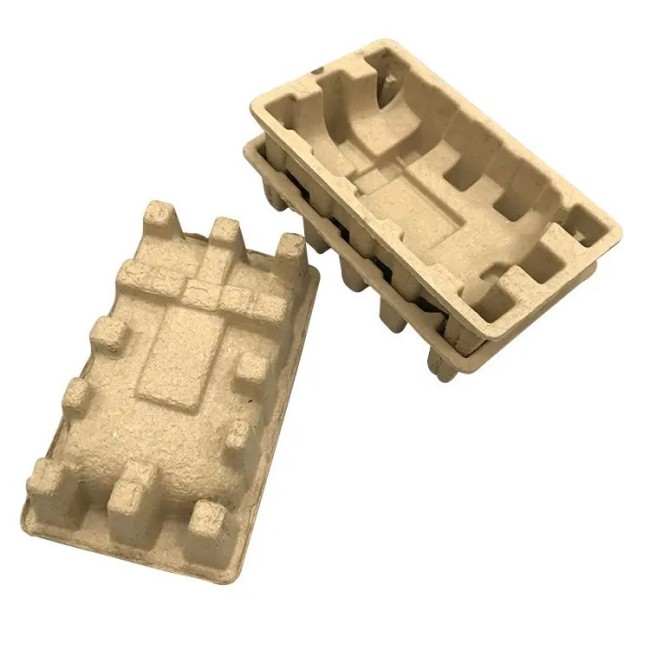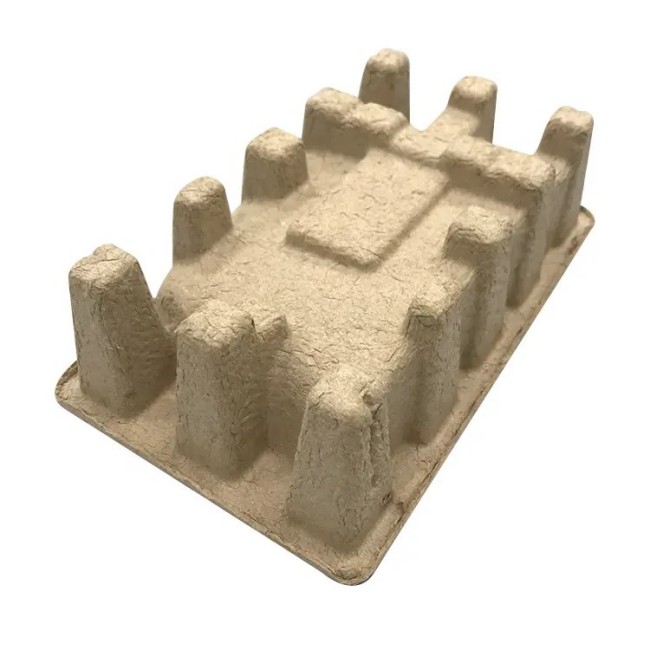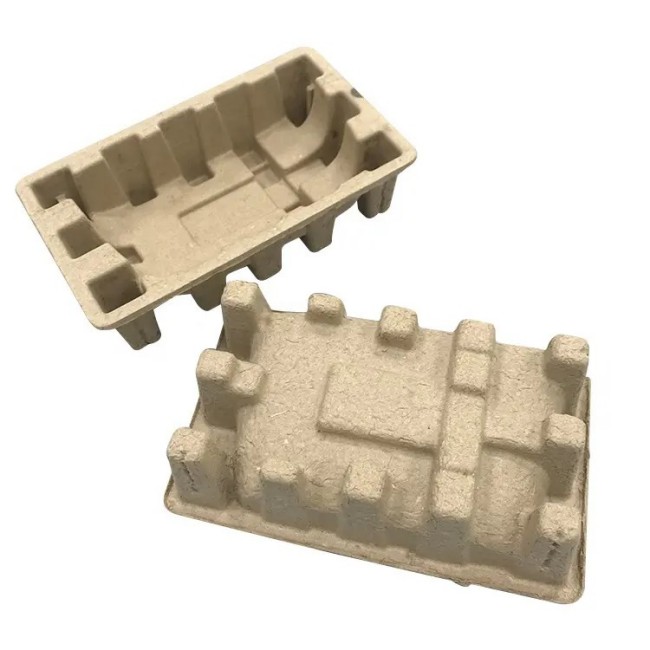As industries shift toward sustainable packaging solutions, dry press pulp trays have emerged as an eco-friendly alternative to plastic packaging. These trays are widely used in food, electronics, and medical packaging due to their biodegradable properties, durability, and recyclability. Understanding the manufacturing process of dry press pulp trays provides insight into their environmental benefits and cost-effectiveness.

Step 1: Raw Material Preparation
The production of molded pulp trays starts with recycled paper fibers, including cardboard, newspaper, and other post-consumer paper waste. These materials are broken down into a pulp mixture by adding water and mechanical agitation. Unlike plastic packaging, this process reduces waste and supports a circular economy.
Step 2: Pulping and Refining
Once the paper fibers are fully broken down into a slurry-like consistency, the pulp undergoes a refining process. This step enhances fiber bonding, ensuring that the final product maintains structural integrity while remaining lightweight. Additives may be introduced to improve water resistance, oil resistance, or flame retardancy based on specific industry needs.
Step 3: Molding and Forming
The refined pulp is then transferred to customized molds, shaped according to the desired product. In dry press pulp tray manufacturing, a vacuum system pulls the pulp mixture onto mesh molds, allowing excess water to drain. The process ensures high precision and uniform thickness, making these trays ideal for eco-friendly packaging solutions.

Step 4: Pressing and Drying
Unlike wet press methods, dry press pulp trays require mechanical pressing after molding. The trays are placed in heated compression molds, where they are pressed under high temperature and pressure. This process removes excess moisture, hardens the structure, and provides a smooth surface, making it suitable for fragile product packaging.
Step 5: Trimming and Quality Control
Once dried, the trays undergo trimming to remove excess edges, ensuring aesthetically clean and uniform shapes. At this stage, manufacturers inspect for defects such as uneven surfaces, cracks, or improper dimensions to guarantee consistent product quality.
Step 6: Packaging and Distribution
The finished biodegradable pulp packaging trays are stacked and packaged for distribution. Since these trays are lightweight and nestable, they reduce shipping costs and storage space, further enhancing their environmental and economic benefits.

Advantages of Dry Press Pulp Trays
Eco-Friendly – Made from renewable and biodegradable materials, they decompose naturally without harming the environment.
Cost-Effective – They are cheaper to produce than plastic alternatives, reducing both material and disposal costs.
Durable and Protective – With high compression strength, they offer excellent shock absorption, making them ideal for fragile goods.
Versatile Applications – Used in food packaging, electronics, medical supplies, and industrial product protection.
Compliance with Sustainability Goals – Many businesses opt for molded pulp trays to meet environmental regulations and consumer demand for sustainable packaging.
Final Thoughts:
The manufacturing process of dry press pulp trays highlights their efficiency, sustainability, and adaptability in modern packaging industries. As companies seek eco-friendly packaging trays, these biodegradable solutions provide a responsible alternative to plastic while maintaining high functionality and cost savings. Switching to biodegradable pulp packaging is not just a trend—it’s a necessary step toward a more sustainable future.


